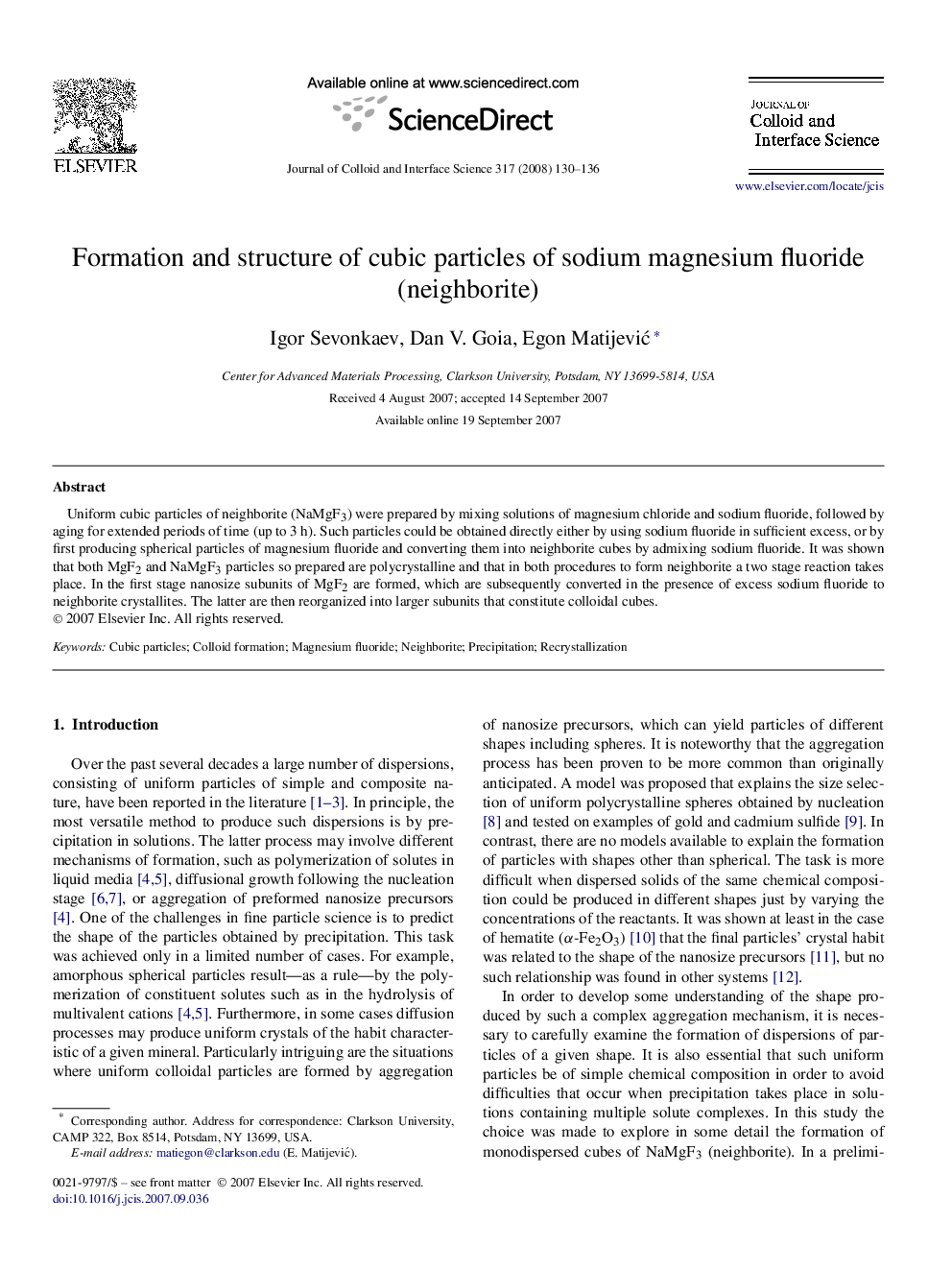| Article ID | Journal | Published Year | Pages | File Type |
|---|---|---|---|---|
| 611875 | Journal of Colloid and Interface Science | 2008 | 7 Pages |
Uniform cubic particles of neighborite (NaMgF3) were prepared by mixing solutions of magnesium chloride and sodium fluoride, followed by aging for extended periods of time (up to 3 h). Such particles could be obtained directly either by using sodium fluoride in sufficient excess, or by first producing spherical particles of magnesium fluoride and converting them into neighborite cubes by admixing sodium fluoride. It was shown that both MgF2 and NaMgF3 particles so prepared are polycrystalline and that in both procedures to form neighborite a two stage reaction takes place. In the first stage nanosize subunits of MgF2 are formed, which are subsequently converted in the presence of excess sodium fluoride to neighborite crystallites. The latter are then reorganized into larger subunits that constitute colloidal cubes.
Graphical abstractUniform neighborite cubic particles (left/top) and magnesium fluoride spheroidal particles (right/bottom) formed in homogeneous solutions at 80 °C.Figure optionsDownload full-size imageDownload as PowerPoint slide
